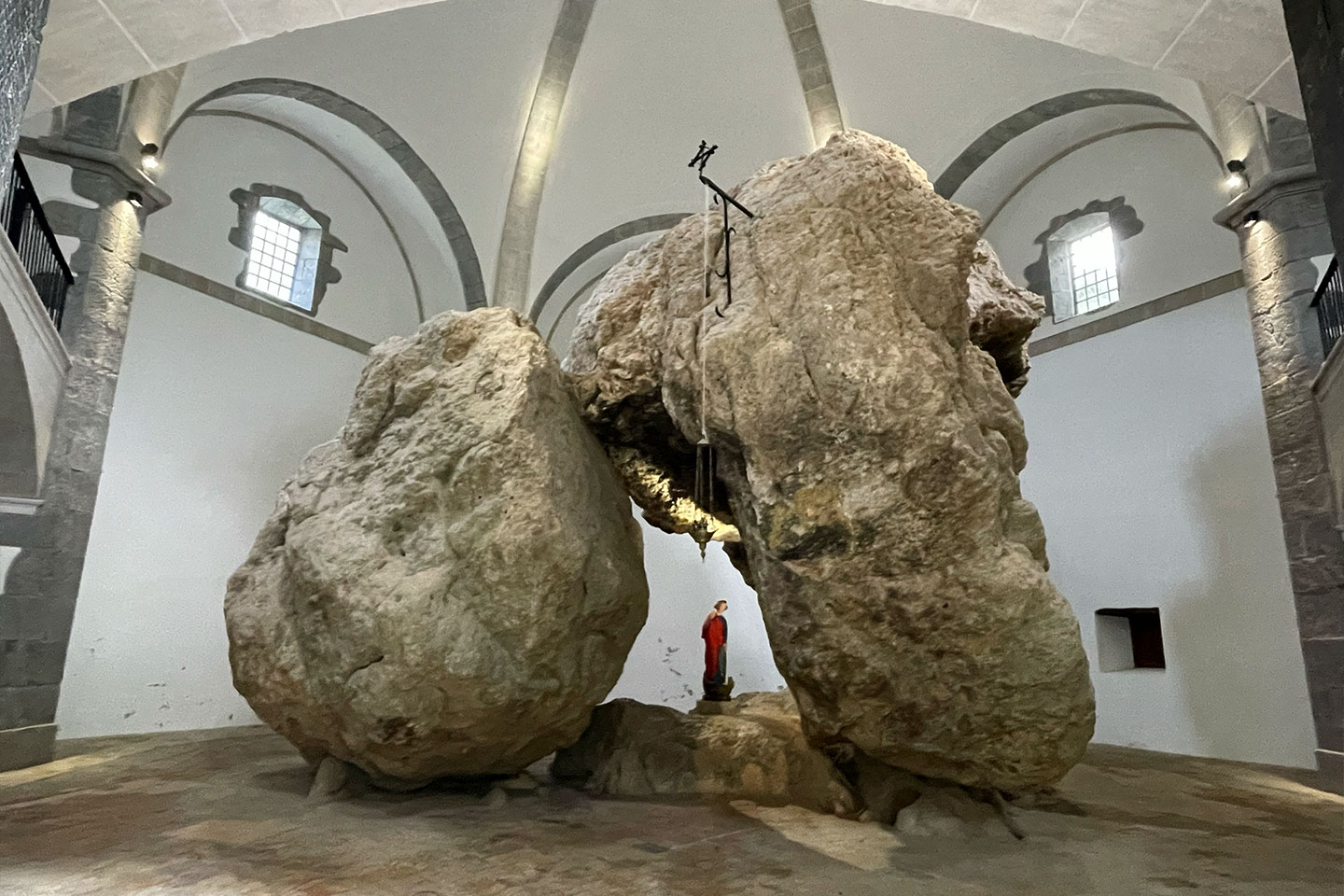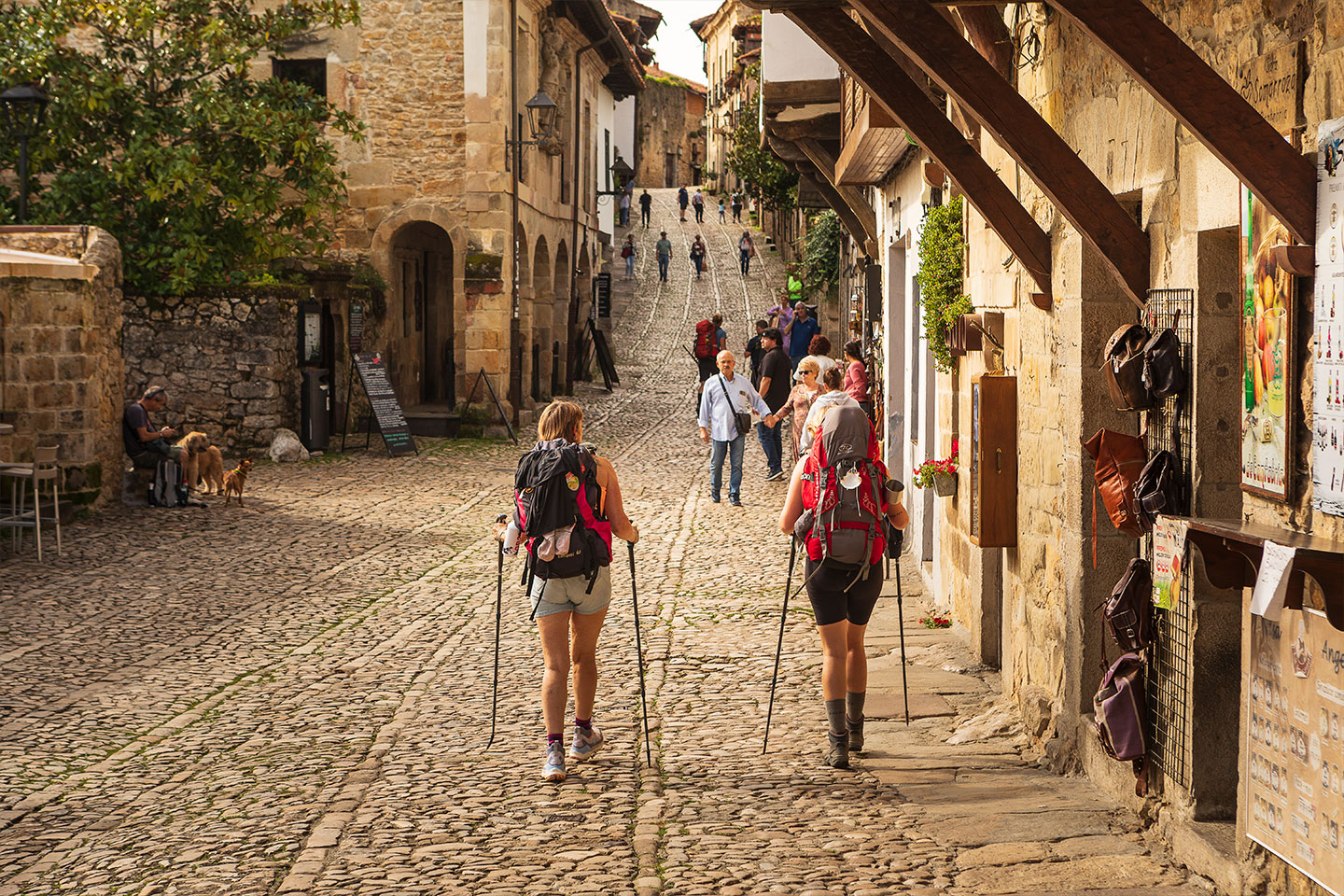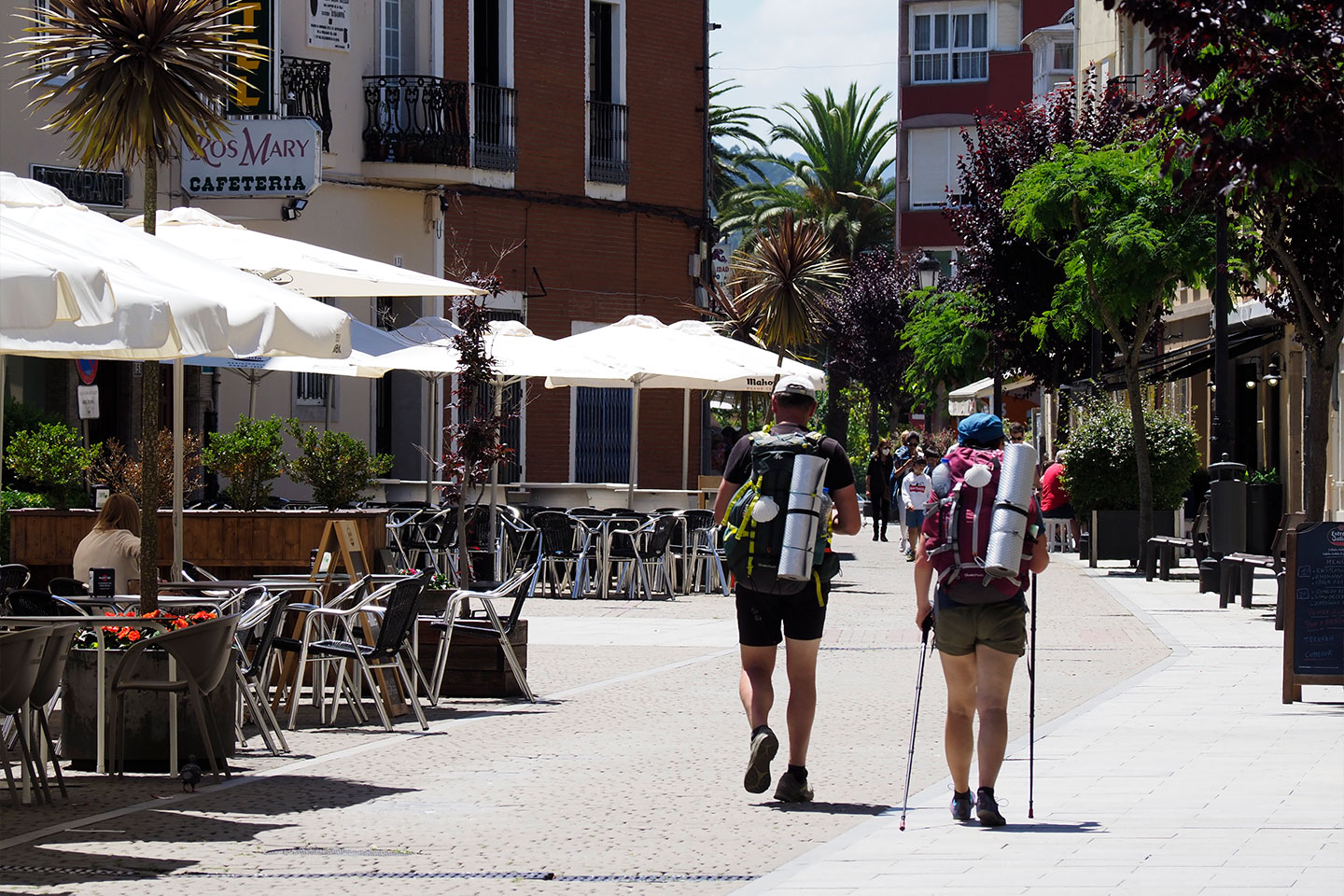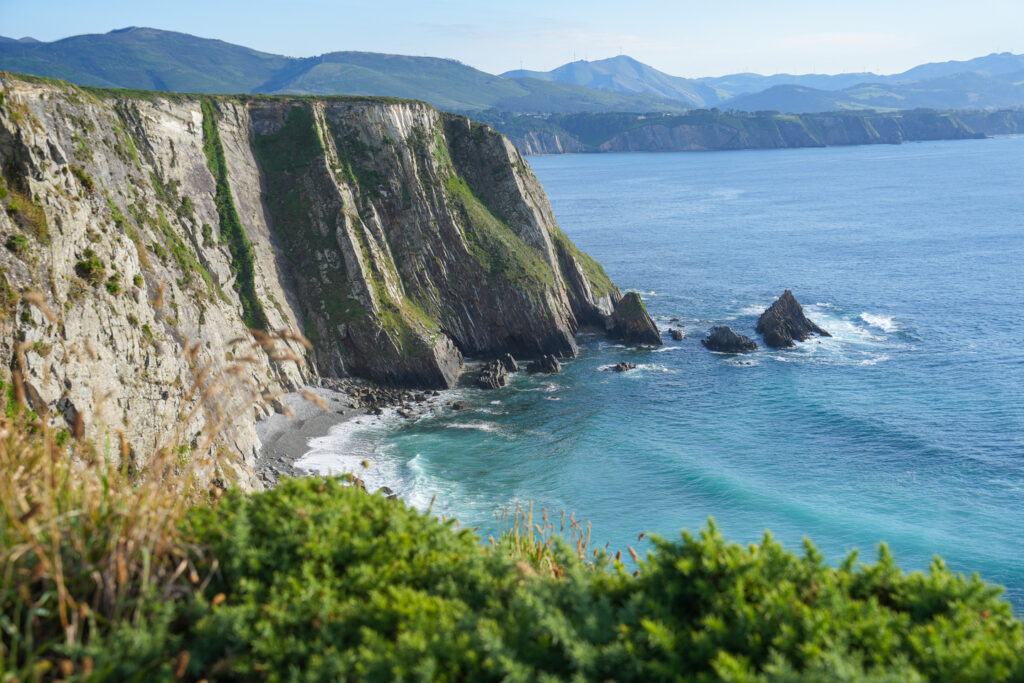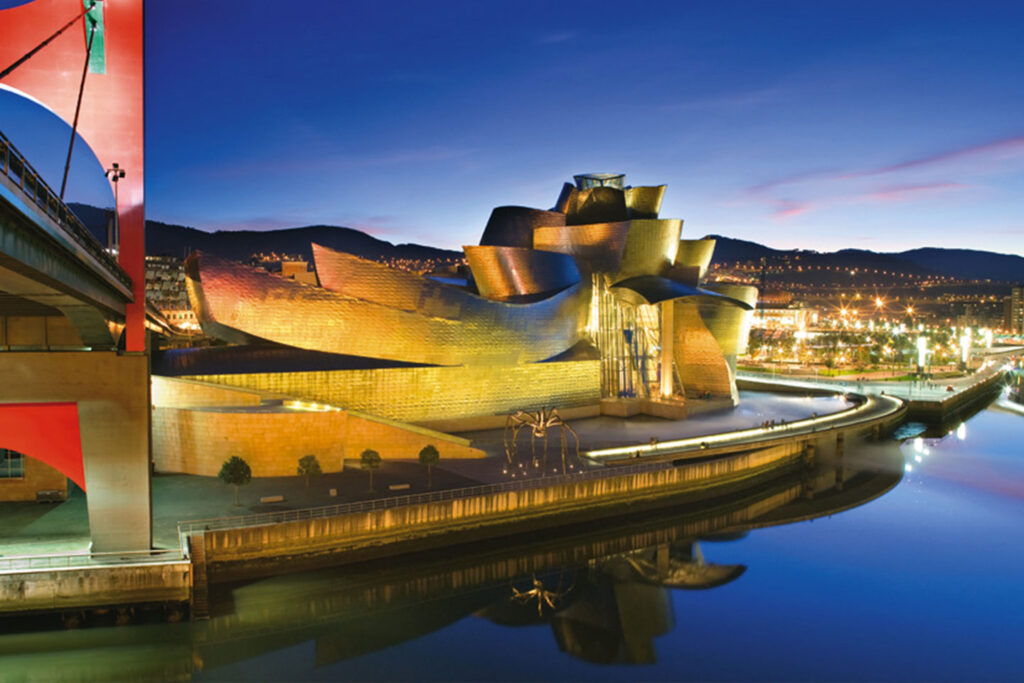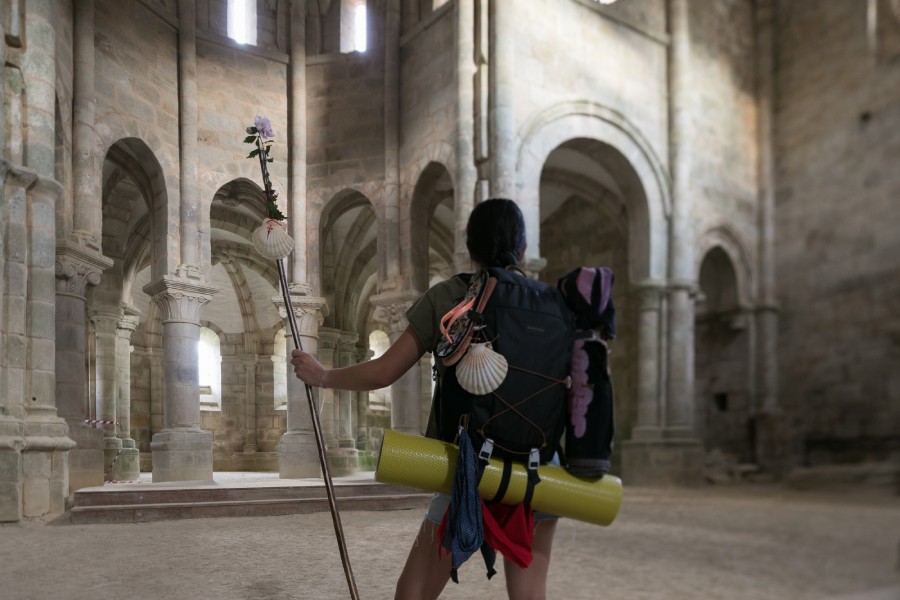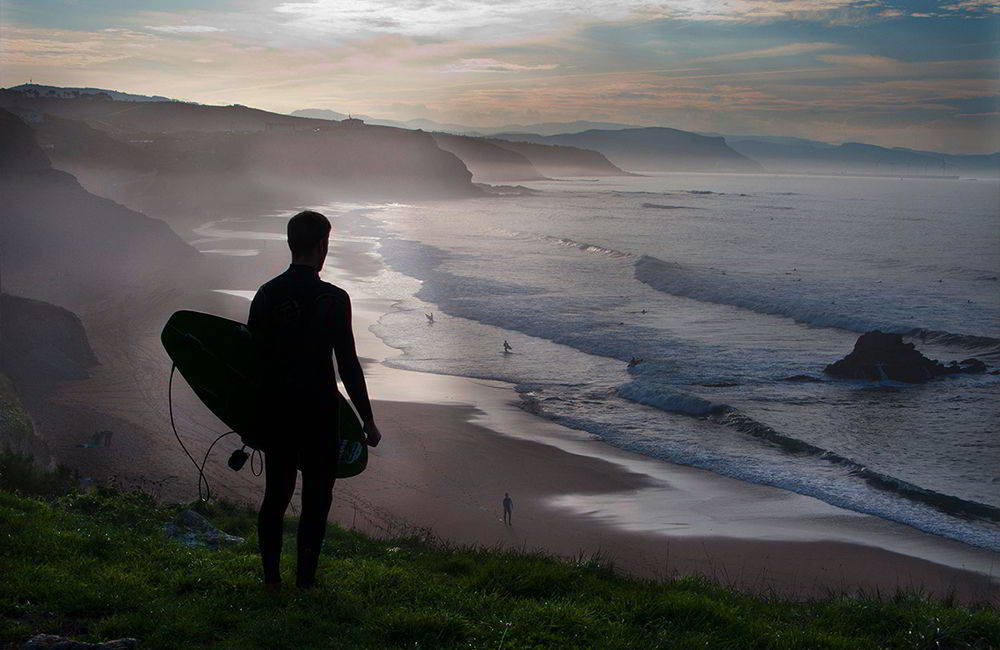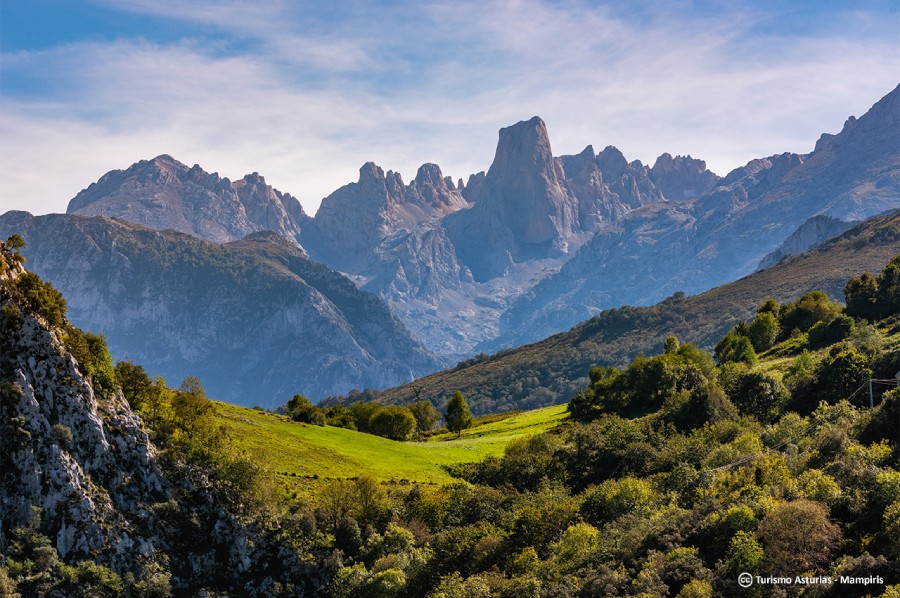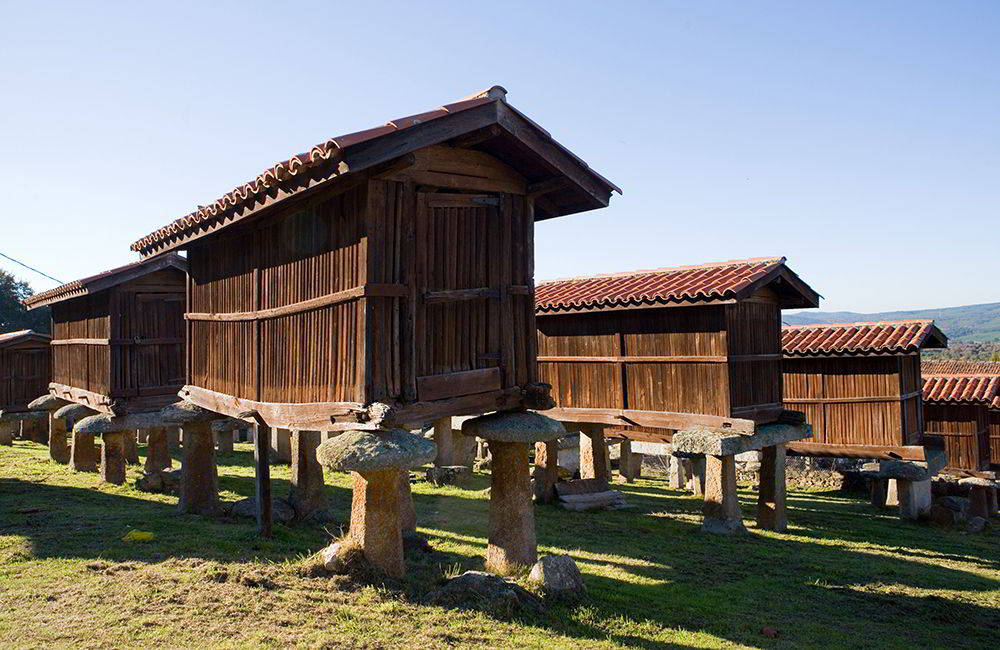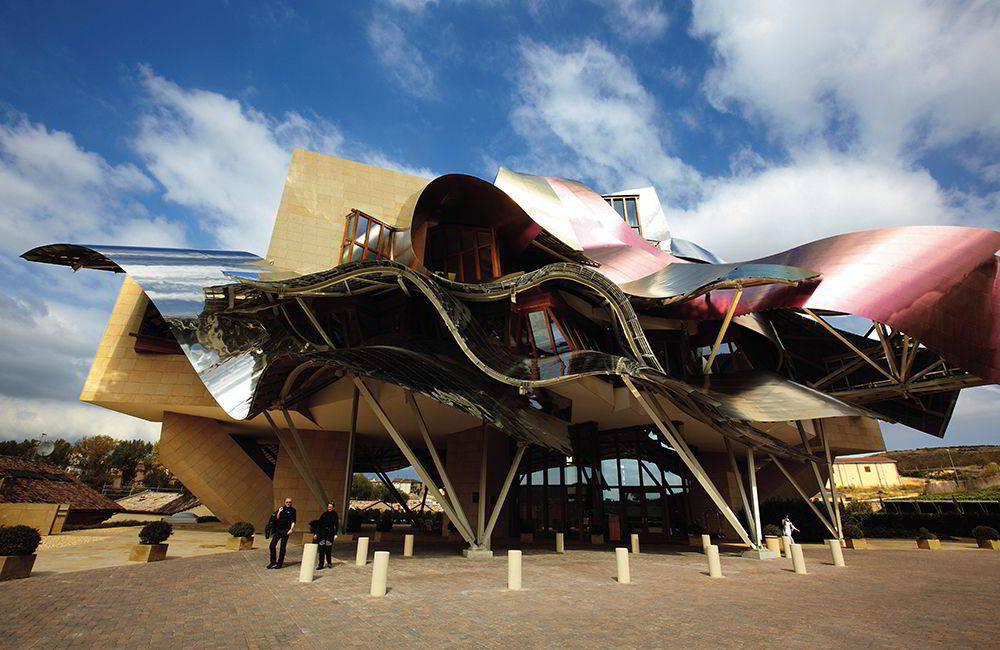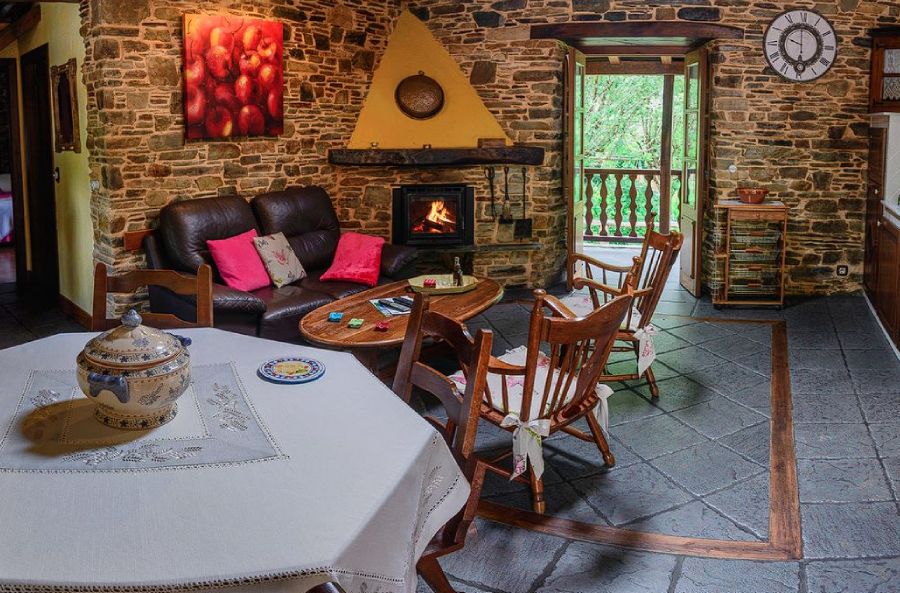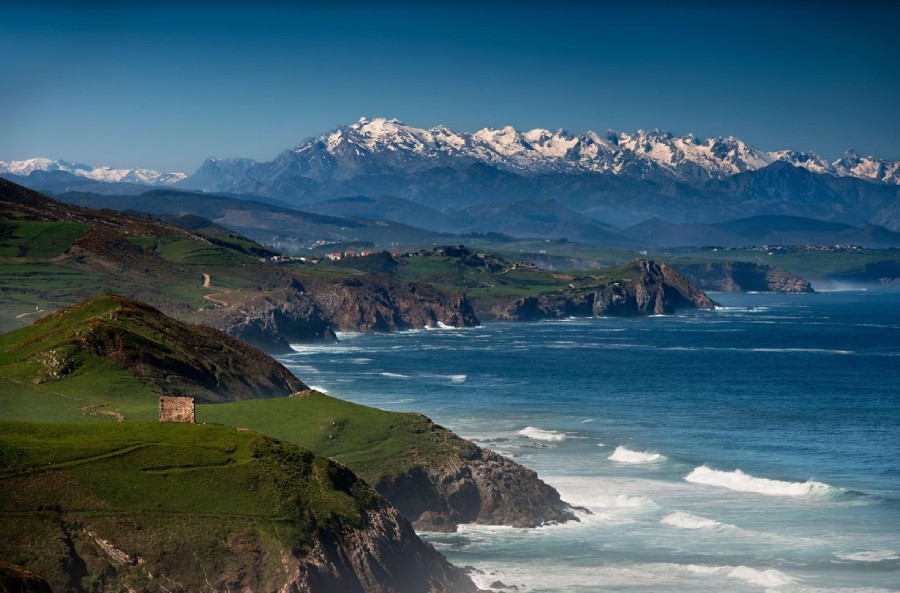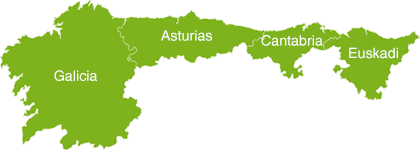Almost all pilgrims who arrive in Santiago agree: reaching the Plaza del Obradoiro is an explosion of joy, but it is in the day-to-day where the best memories of the Northern Ways are carved. Many aspects contribute to this (the company, the weather, physical condition, a ray of sunshine at the right moment…) but, above all, the environment that surrounds us and that will not only test us but will also gift us unforgettable panoramas, landscapes, photographs, and sensations. We have selected four stages of the Northern Ways so that you can be the one to dress them with the best experiences.
BASQUE COUNTRY. Camino del Norte. From Deba to Markina-Xemein (20 km)
Where does the stage start?
In Deba, a port town nestled between cliffs and mountains that, at the beginning of the 20th century, welcomed those ‘tourists’ who popularized summer holidays along the Cantabrian coast. The strategic importance of the town was already evident in the Middle Ages, which is why it inherited one of the most magnificent (and large, as it is cathedral-sized) Gothic temples in Gipuzkoa, the church of Santa María, notable for its portico and cloister. By the way, Deba was, for several centuries, the natural maritime outlet to European ports for Castilian goods.
Where does it end?
It ends in Markina-Xemein, a small inland town that, despite its size, was an important medieval village. The greatness of Markina-Xemein lies in reaching it after almost twenty kilometers of walking (or pedaling) along concrete and dirt paths, in silence and solitude, and after having crossed the Arno pass, the highest point of the route through the Basque Country. If you choose to stop in Markina-Xemein (some prefer to go a few more kilometers to the monastery of Zenarruza) it will be worth strolling through the narrow streets of its old town in search of tower houses such as Mugartegi or Barroeta.
Why is it so special?
Surely there is no wilder and more isolated stretch on all the Ways of Santiago that cross Spain: almost twenty kilometers through sparsely populated rural areas and vast pine forests where silence reigns. From the start of the route in Irun, this will be the first time we move away from the coast and gradually head toward Bilbao. It’s time to say ‘see you later’ to the Cantabrian Sea as we leave Deba.
What monument or experience should I not miss?
The hermitage of San Miguel de Arretxinaga, one of the most unique Christian temples along the Northern Way. It is a hexagonal 18th-century building that envelops an ancient megalithic sanctuary made up of three large rocks forming a tripod. Beneath them lies the altar, which must have been an attempt to Christianize a pagan worship site. For centuries, it has been customary for engaged couples to visit the sanctuary (and pass under the rocks three times) to ensure offspring.
CANTABRIA. Camino del Norte. From Santillana del Mar to Comillas (24 km)
Where does the stage start?
In Santillana del Mar, one of the medieval gems of northern Spain and a classic in the rankings of the most beautiful villages in the country. It may sound cliché but it isn’t: Santillana is the closest thing to living for a while in the Middle Ages and connecting with the primitive spirit of the Way. You must walk its cobbled streets in search of the Velarde palace, the tower of Don Borja or the Collegiate Church of Santa Juliana. It’s worth taking a break to explore it thoroughly and look for, for example, the erotic capital of a couple embracing lustfully or the upside-down monkey, a true rarity of Romanesque art. Just 2.5 kilometers from Santillana is the Altamira Cave, declared a UNESCO World Heritage Site, a gem of Paleolithic cave art with its iconic bison.
Where does it end?
It ends in Comillas, a coastal town that combines seafaring tradition, indiano heritage, and modernism. There are not many towns as versatile as this one along the Way, where you can find gems like the Sobrellano Palace, the awe-inspiring cemetery, Gaudí’s Capricho or the Pontifical University, which offers the best panoramic views of the town. Add to this a natural environment of meadows, beaches, and viewpoints over the Cantabrian Sea.
Why is it so special?
Because in this stage the walker will encounter one of the most genuine identity marks of the Northern Way: the indiano architecture and culture, born from those Cantabrians who went to the Americas and succeeded. Don’t forget the small hidden treasures that will appear among meadows and patches of forest: the church of San Martín de Tours in San Martín de Cigüenza or the surprising village of Cóbreces.
What monument or experience should I not miss?
Gaudí’s Capricho, in Comillas, one of the few works the Catalan architect created outside of Barcelona. This modernist building, with its colorful sunflower-inspired ceramic, is a visual gem that hides musical surprises. Its promoter was the indiano Máximo Díaz de Quijano, who was so fond of music that he filled the house with references and tributes to this artistic discipline. The most surprising of these? The windows in the main hall which, when opened, produce different notes through tubular bells.
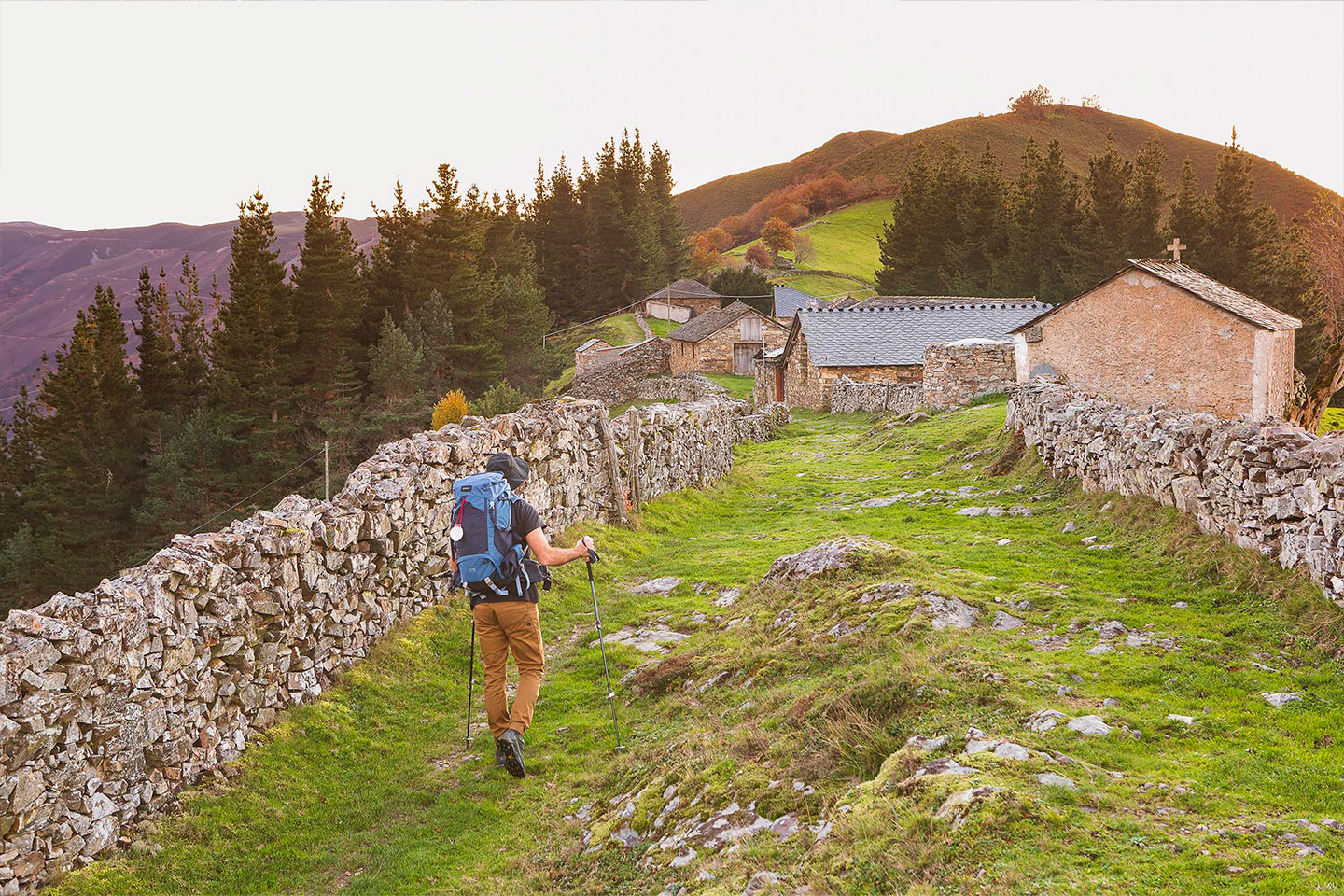
ASTURIAS. Camino Primitivo. From Pola de Allande to La Mesa (21 km)
Where does the stage start?
In Pola de Allande, a charming inland Asturian village surrounded by mountains. Historically, Pola has been a place of welcome and refuge for pilgrims who used the stop to regain strength before ascending to the “roof of the way,” the Puerto del Palo. Due to this strategic importance (and being something like the ‘calm’ before the ‘storm’), Pola once had up to three pilgrim hospitals, now disappeared. What hasn’t disappeared is its reputation as a place to sample the best of inland Asturian cuisine, usually in very generous portions.
Where does it end?
It ends in La Mesa, a tiny high-altitude hamlet, part of the Grandas de Salime council.Despite its small size, its location high up in the mountains makes it a strategic (and necessary) enclave for those pilgrims who want to calmly approach the summit of the pass. The sense of silence, peace, and isolation—so present in the Asturian stages—reaches its peak here.
Why is it so special?
For its toughness, its beauty, and its silence—perhaps the three virtues most valued by those walking the Camino del Norte. These will be experienced in full by those who rise early to reach Puerto del Palo (1,146 meters high, the highest point of the entire Camino del Norte and the Camino Primitivo) with the first light of day. Not much more needs to be said. What awaits in the next stage also enhances this one’s virtues: a steep climb through mountain moorlands in search of the unique Salime Reservoir.
What monument or experience should I not miss?
The enclave of Montefurado, the first group of houses after the summit, where a fresh water fountain is located—a true pleasure to taste. The group of houses is deeply linked to the Camino de Santiago, as it hosted a pilgrim hospital and a chapel, still standing today. Currently, Montefurado is inhabited only by cows grazing in its meadows. The views, of course, are fantastic.
GALICIA. Camino del Norte. From Ribadeo to Lourenzá (29 km)
Where does the stage start?
In Ribadeo, where you’ll experience a full burst of stimuli: it is the first Galician town on the Northern Way, offers views of neighboring Asturias, and is bathed by the waters of the Ría of the same name. Arriving via the Puente de los Santos already creates some unforgettable memories, and exploring it will add more: strolls through the San Roque neighborhood, its indiano architecture, the monumental complex at Plaza de España…
Where does it end?
It ends in Vilanova de Lourenzá, an attractive (yet another) village in the interior of the province of Lugo, famous for its historical link with the Camino. The village is surrounded by green meadows and gentle hills covered by eucalyptus forests. To discover its most precious treasure, you just have to look up at the bell tower of the church of Santa María de Valdeflores and go there…
Why is it so special?
Because it perfectly illustrates the transition between two worlds that constantly struggle on the Northern Way: that of the sea and that of the interior; that of the urban and that of the rural; that of the great communication routes (such as the A-8 motorway) and the small roads that link towns and villages and even serve as a place for locals to go for a stroll. The first contact with inland Galicia is a perfect prologue to what is to come: a very generous nature, a more than friendly solitude and excellent gastronomy wherever we stop.
What monument or experience should I not miss?
The spectacular monastery of San Salvador de Lourenzá, a little-known Baroque gem that surprises with its scale and refinement. Its imposing façade resembles that of the Cathedral of Santiago de Compostela, and no, that’s no coincidence: it was designed by the same architect, Fernando de Casas Novoa, who created the Baroque façade that presides over the Obradoiro (photographed every year by thousands of visitors from all over the world).
If you want to dive deep into the Northern Way and learn all the practical details about the stages or gear, you can download this document.
